| Homosassa Springs is a park on the south-west coast of Florida
and is famous as a refuge for the threatened manatees or sea-cows. The
sea/fresh water conditions are perfect here. This lady was very happy and
thought she had the most perfect job in the world, feeding treats to
manatees and talking about them to the visitors. There were five or six in this pool,
including a mother and two daughters. They
are some of the strangest creatures on earth and have no predators but are
prone to damage from boat propellers as they graze on the sea grasses in the
shallow waters. Many are brought here to recover from
such incidents, and are then returned to the wild whenever possible. Manatees can be 8-10 ft long and weigh 2-3000lb.
They are mammals and their closest relative is the elephant. | 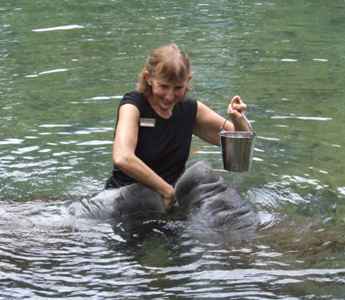 |
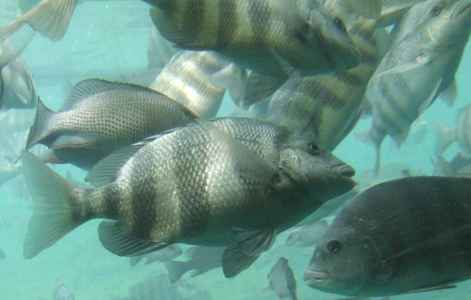 | The pool is a
natural one open to the Gulf of Mexico via various channels, so fish are
free to come and go as they please. Manatees like it during the winter
months because it is fed by a natural spring of warm water. There is an
underwater viewing chamber where one can see fish as well as
the manatees. Although the water is fresh here from the springs, the salt
water fish learn to cope and seem to do very well, judging from the numbers. |
| The park also has displays of other creatures native to this
area. Among other amphibious exhibits we saw this rather
miserable-looking frog. | 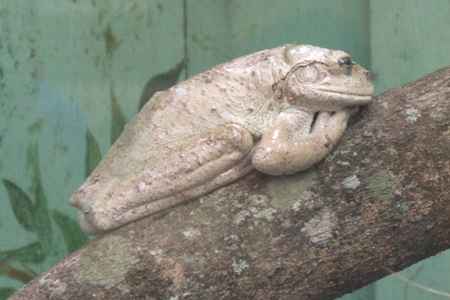 |
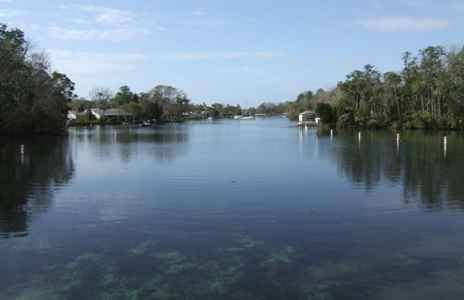 | This is one of the waterways which lead to the sea. There
are houses with docks at
the bottom of the gardens. This must be the way to live!. |
| The other major residents of the park are the alligators. At
this time of year it is quite cold for them, so they spend much of the day
snoozing in the sun. The alligators are essentially fresh water creatures. | 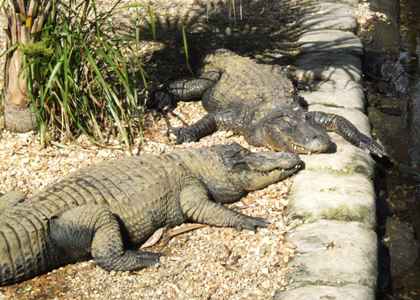 |
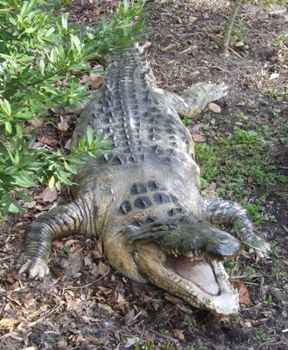 | Crocodiles, on the
other hand, are salt water creatures. They are paler in colour and when
their jaws are closed you can see their bottom teeth. You can't with
alligators. Having said that, I'm convinced this one was plastic. But then
I thought that about some of the alligators too. However I wasn't prepared
to put it to the test! |
| A fairly new building on the site is a vivarium for the reptiles.
This is a venomous southern copperhead. It can grow to 4.5ft and lives off
birds, rats, lizards and insects. | 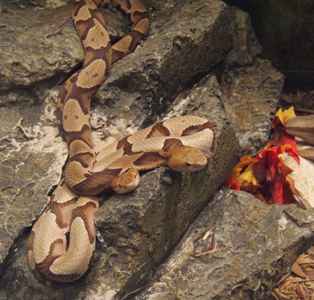 |
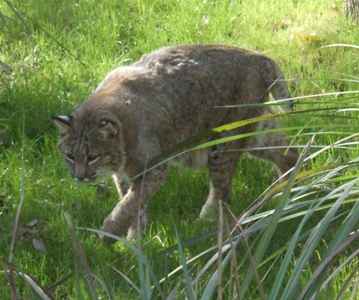 | Most of the native mammals
in Florida are now rare or endangered, including this bobcat. I don't think you would confuse
this with a domestic tabby! It is primarily nocturnal. |
| Even rarer, but larger and more powerful, is the Florida panther.
Only about 80-100 are thought to remain in the Everglades, an area
exceeding half a million acres. | 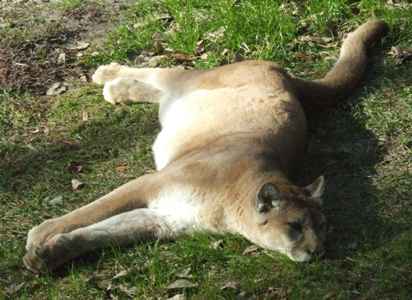 |
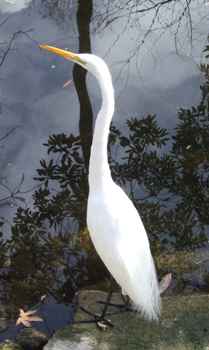 | The egrets are some
of the commonest fishermen wherever there is water. Their beaks are some of
the sharpest I've seen, but they somehow lack the menace of the herons. |
| It must be getting close to breeding time for the flamingos.
These four were having a real go at each other. They fluff up their feathers
to make themselves seem larger/more menacing/more ???? - who knows, I'm not
a flamingo. | 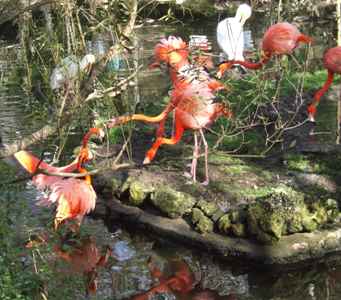 |
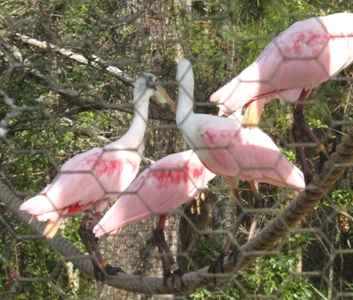 | Not a good photo
since I didn't get the characteristic bills of these roseate spoonbills, but
the colours are really beautiful. These are natural in the Everglades but
they go elsewhere for the winter and haven't returned yet. |
| I think this is a cinnamon teal although it may bee a blue winged
teal. The latter is common in Florida whereas the former is found more in
the west. It may have been blown in by a hurricane. It had been injured
because it had a distinct limp rather than a waddle. Most of the creatures
in the park
here have been damaged in some way, although the water birds are free to fly
where they please. Not surprising since this park is billed as a
refuge, rather than a zoo. Many of the creatures are returned to the wild
from here once they have recovered. | 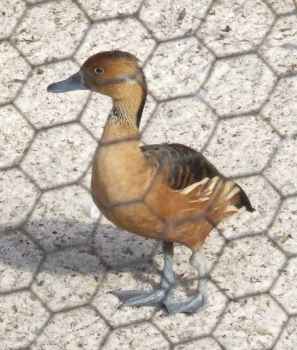 |
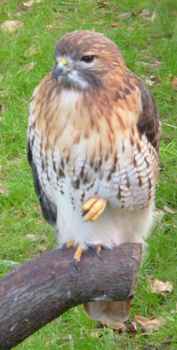 | We have
not seen as many wild birds as we had expected but we have seen more raptors
than we expected. This is a red shouldered hawk, quite a common species and
quite magnificent in flight. |
| This is The American Bird, the bald eagle. I'm afraid I just keep
thinking of Sam, since I brought up kids on a diet of the Muppets. Probably
enough to get me thrown out as an undesirable. It is a magnificent bird
though. This one has a damaged wing so can't really fly. | 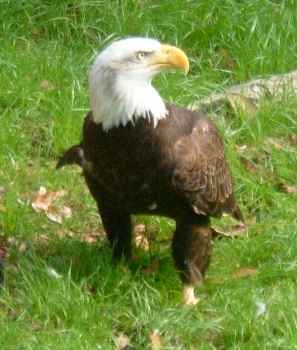 |
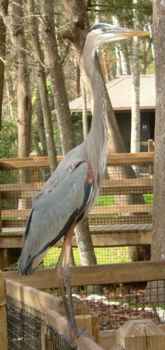 | This is also a
common bird here, the great blue heron. At full stretch they are 4-5ft tall and
awesome in flight. We have seen dozens, whereas the only herons I've seen at
home were the ones after my koi!. |
| Less common although not quite endangered are the wood storks.
Ugly schoolteacher birds to me but beautiful in flight. They do nest
in the Everglades but not usually close to humans. | 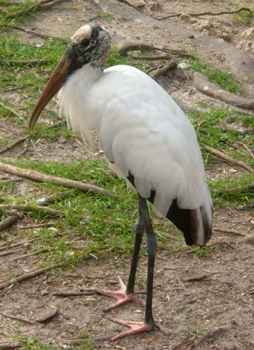 |
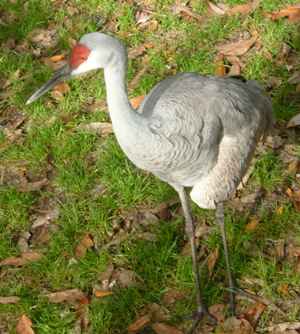 | This is a limpkin
and only found in Florida. It is common in the swamps where it thrives on
snails. |
| This is a wild turkey, not the sort that ends up on your plate at
Thanksgiving but relatively common in the wild. I'm not sure why they named
a whisky after it. | 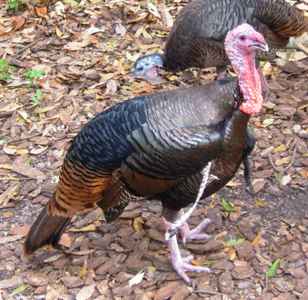 |
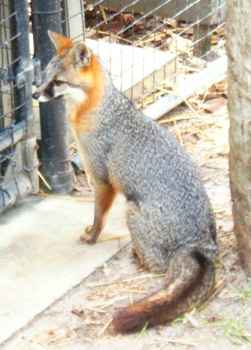 | The Mexican gray
fox is quite common and very adaptable. There is a pair here which looks quite
splendid and in good condition. They are excellent mousers and can climb
trees. They are mostly nocturnal and secretive. They den in hollow logs,
under rocks or sometimes in ground burrows. They rarely invade poultry
yards. |
| Just to show we do keep our eyes open and don't just look at the
big animals, we saw this fellow when he moved. The photo is larger than
life. They can jump prodigious distances, the equivalent of jumping off a
twenty storey building. | 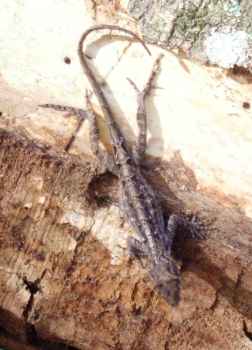 |
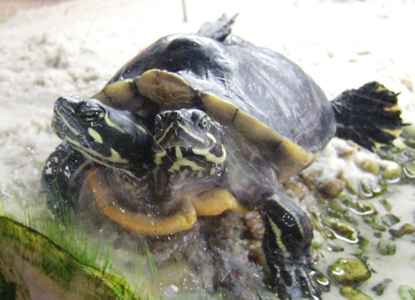 | In the entrance is
an aquarium housing Gege. Gege is a two headed Florida turtle born in 1992.
Two headed turtles are rare and usually don't survive long in the wild. No-one knows why they occur. |
|